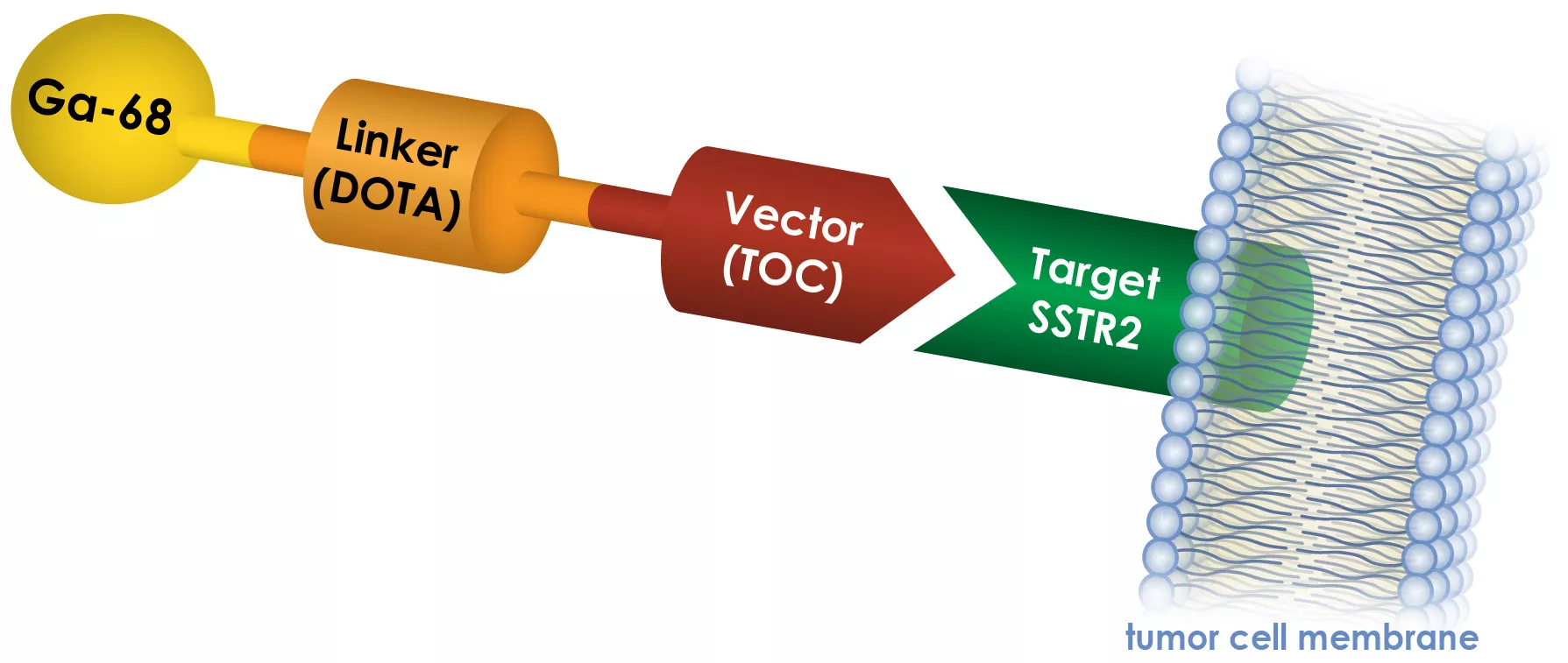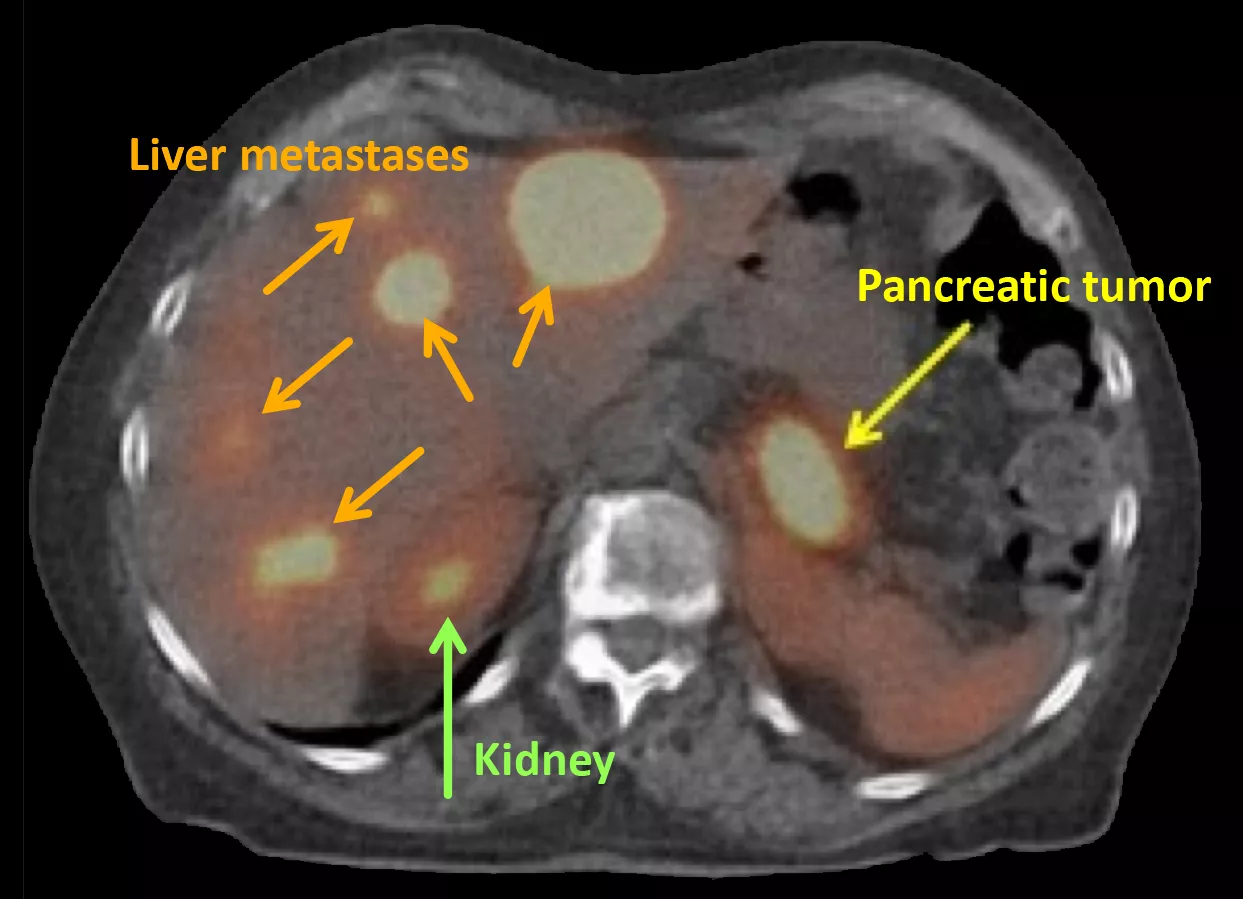What is theranostics?
Theranostics is a combination of the terms therapeutics and diagnostics. Theranostics is the term used to describe the combination of using one radioactive drug to identify (diagnose) and a second radioactive drug to deliver therapy to treat the main tumor and any metastatic tumors.
The diagnostic phase of theranostics
Tumor cells have a shell, called a membrane; there are certain proteins such as the somatostatin receptor (SSTR2) on the tumor cell membrane that can serve as a target for cancer drugs.

Ga-68 DOTATOC is a radioactive diagnostic drug that targets SSTR2.Ga-68 DOTATOC is injected into a patient’s vein and travels throughout the bloodstream to all organs and tissues of the body. If the patient has a neuroendocrine tumor with SSTR2 on the tumor cell membranes, the Ga-68 DOTATOC will bind to the SSTR2 and the tumor will light up on a PET scan.

The therapeutic phase of theranostics
Once neuroendocrine cancer is diagnosed using Ga68-DOTATOC and a PET scan, the Ga-68 can be replaced with another radionuclide, such as lutetium-177 (Lu-177) or yttrium-90 (Y-90), that can target and kill tumor cells that have SSTR2 on their membranes.

Therapeutic Y-90-DOTATOC and Lu-177-DOTATATE can both be injected into a patient’s veins and travel to any part of the body that has SSTR2 proteins. These therapeutic drugs bind to the SSTR2 proteins like a key in a lock, allowing the drug to enter the tumor cells and kill it by damaging that cell’s DNA. Healthy cells around the tumor that do not have SSTR2 proteins on their membrane are not affected by the drug.
Additional new diagnostic agents and therapeutic agents are being developed for use in the identification, diagnosis and treatment of neuroendocrine tumors. These theranostic drugs will enable doctors to personalize treatment based on the very specific type of cancer and the specific tumor cell membrane proteins that each patient may have.